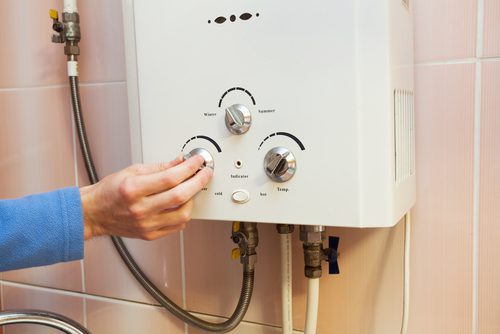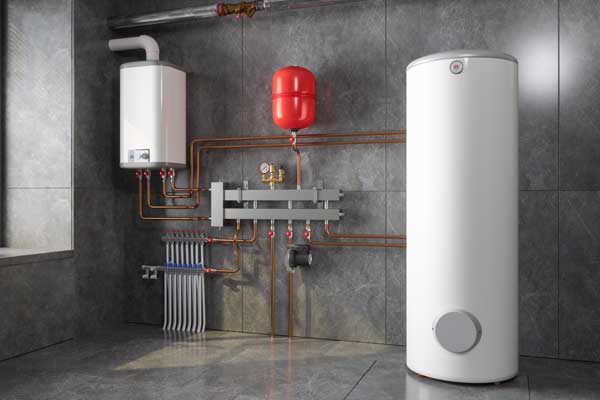The writer is making a few great pointers on the subject of Water Heater Maintenance Tips You Can't Afford to Forget in general in this article further down.

Warm water is vital for daily convenience, whether it's for a rejuvenating shower or cleaning recipes. To ensure your warm water system runs successfully and lasts longer, routine upkeep is key. This article supplies practical tips and insights on just how to keep your home's hot water system to prevent interruptions and pricey repairs.
Introduction
Preserving your home's warm water system could appear daunting, but with a couple of straightforward steps, you can ensure it runs efficiently for several years ahead. This overview covers everything from understanding your hot water system to DIY maintenance tips and recognizing when to employ professional aid.
Relevance of Preserving Your Hot Water System
Regular upkeep not only prolongs the life-span of your warm water system but also ensures it runs efficiently. Overlooking upkeep can cause reduced efficiency, higher power expenses, and even early failing of the system.
Indications Your Warm Water System Demands Upkeep
Recognizing when your hot water system needs interest can avoid significant issues. Look out for indications such as inconsistent water temperature level, weird noises from the heater, or corroded water.
Comprehending Your Warm Water System
Prior to diving right into upkeep jobs, it's handy to recognize the standard parts of your warm water system. Commonly, this consists of the hot water heater itself, pipelines, anode poles, and temperature level controls.
Regular Monthly Maintenance Tasks
Routine monthly checks can help catch minor problems before they escalate.
Flushing the Hot Water Heater
Purging your hot water heater eliminates debris accumulation, enhancing efficiency and prolonging its life.
Monitoring and Changing Anode Rods
Anode poles avoid rust inside the storage tank. Checking and replacing them when broken is critical.
Examining and Adjusting Temperature Level Settings
Changing the temperature settings makes certain optimal efficiency and security.
DIY Tips for Upkeep
You can do several upkeep jobs on your own to maintain your hot water system in top problem.
Checking for Leaks
Consistently check pipes and links for leakages, as these can bring about water damage and higher costs.
Testing Pressure Alleviation Valves
Examining the pressure safety valve ensures it operates correctly and stops excessive stress build-up.
Insulating Pipes
Insulating warm water pipes lowers heat loss and can conserve energy.
When to Call an Expert
While do it yourself maintenance is helpful, some concerns require specialist competence.
Complex Problems Requiring Expert Aid
Examples consist of major leakages, electric issues, or if your hot water heater is regularly underperforming.
Regular Professional Upkeep Benefits
Expert upkeep can include detailed evaluations, tune-ups, and making sure compliance with security criteria.
Verdict
Normal maintenance of your home's warm water system is essential for efficiency, durability, and cost financial savings. By following these ideas and recognizing when to seek expert aid, you can guarantee a trustworthy supply of warm water without unexpected interruptions.
How to Maintain an Instant Hot Water Heater
Before tinkering with your hot water heater, make sure that it’s not powered on. You also have to turn off the main circuit breaker and shut off the main gas line to prevent accidents. Also turn off the water valves connected to your unit to prevent water from flowing into and out of the appliance. 2. When you’re done, you have to detach the purge valves’ caps. These look like the letter “T” and are situated on either side of the water valves. Doing so will release any pressure that has accumulated inside the valves while at the same time avoid hot water from shooting out and burning your skin. 3. When the purge valves’ caps are removed, you have to connect your hosing lines to the valves. Your unit should have come with three hoses but if it didn’t, you can purchase these things from any hardware or home repair shops. You can also get them from retail stores that sell water heating systems. Read the user’s manual and follow it to complete this task properly. When the hosing lines are connected, open the purge port’s valves. 4. You should never use harsh chemical cleaners or solutions when cleaning your unit. Make use of white vinegar instead. It should be undiluted and you’ll probably use about 2 gallons. 5. Now flush your water heater. This task should probably take about 40 minutes. We can’t give you specific directions for this because the procedure is carried out depending on the type, model and brand of your heater. With that being said, refer to the user’s manual. 6. When you’re done draining the unit, you have to turn off the purge port valves again. Remove the hosing lines that you earlier installed on each of the water valves. Put the valve caps (purge port) back in their respective places and be very careful so as not to damage the rubber discs that are found inside these caps. 7. Now that everything’s back in place, check your user’s manual again to find out how to reactivate your water heating system. 8. Once it is working, turn one of your hot water faucets on just to let air pass through the heater’s water supply pipes. Leave the tap on until water flows smoothly out of it. https://www.orrplumbing.com/blog/2014/september/how-to-maintain-an-instant-hot-water-heater/

Hopefully you enjoyed reading our article on How to Maintain Your Water Heater & Prolong its Life. Thank you so much for taking time to read through our posting. Remember to pause to share this article if you liked it. Many thanks for your time. Come back soon.
Book Inspection